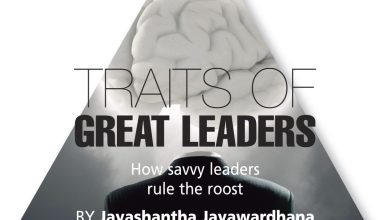KNOWLEDGE MANAGEMENT
INTELLECTUAL ASSETS
Gloria Spittel describes the critical process of capturing knowledge
 As a business concept, knowledge management isn’t new. Having been on the radar for more than two decades, it has helped organisations grow into large corporations whose wealth of knowledge underscores the existence and operation of a business.
As a business concept, knowledge management isn’t new. Having been on the radar for more than two decades, it has helped organisations grow into large corporations whose wealth of knowledge underscores the existence and operation of a business.
But the application of knowledge management, and tools that assist in building and managing organisational knowledge as an operational goal, have inadvertently been cast aside in favour of traditional needs and requirements.
With evolving norms in the workplace – and the increasing encroachment of technology and managerial methodologies championing flexibility, mobility and bring your own device (BYOD) systems – knowledge management is becoming increasingly relevant to the growth and functioning of a business.
An inherent issue with knowledge management is to understand what’s meant by the term. Different definitions of the term are used by various organisations across the globe.
But the common themes shared among these definitions can be summarised as ‘a systematic organisational culture that promotes strategies and processes designed to identify, create, capture, leverage and share organisational knowledge, to increase the organisation’s performance and competitiveness.’
Intrinsic to organisations that leverage knowledge for growth and development is the ability to capture and document both explicit knowledge (measurable knowledge that can be easily codified and transmitted) and tacit knowledge (that which is known but difficult to codify such as business intuition and experience), and sharing organisational knowledge effectively with all relevant departments and employees across geographical branches. As such, creation is also a part of knowledge management.
An organisation embarking on the knowledge management route may seek to develop its business knowledge and protect it. But this may not provide sufficient prominence to managing the resource: for some, the simple creation and protection of proprietary organisational knowledge is sufficient for organisational growth, and increased revenue and profits. However, a plethora of reasons suggests that the proper capture and dissemination of knowledge represents a competitive asset for any organisation.
First, knowledge management is important to the development of intellectual assets and capital. Intellectual assets consist of what an organisation’s employees know and know how to do, and include core competencies, capabilities and technologies.
Core competencies at the organisational level are defined as the skills needed to achieve a high level of performance. Capabilities are strategic skills that are necessary to integrate and apply competencies. And technologies are the technological tools and organisational methods utilised to achieve results.
Knowledge management is becoming increasingly important in the changing landscape of workspaces across the world especially in dispersed global organisations. In addition to running multiple business sites, global organisations are also multicultural and multilingual.
This makes knowledge management more challenging but all the more important; and the need to access organisational knowledge for decision-making and customer response isn’t affected by distance – it is magnified.
For example, in centralised organisations, the decision-making process takes time. But in decentralised organisations that have made access available to necessary knowledge through technology and other means, the response time to solve customer issues is short.
Thirdly, knowledge management is necessary for lean organisations. While these organisations focus on running efficiently and effectively with less managerial layers and bureaucracy, they also need to work at speed, and respond to customer requirements and needs as and when they arise. A strategic tool that enables a lean organisation is codified organisational knowledge that’s accessible to employees whenever and wherever it is required.
Fourthly, in addition to regular staff turnover, employees no longer seek to remain in one organisation for the duration of their careers. Employee mobility can cause issues for business and knowledge continuity if knowledge management tools are not established to capture the knowledge created. When tools exist to capture employee knowledge, they create value that can be shared and transferred to the various functions of an organisation.
And fifth, customer patience expects responses to queries in a matter of days if not hours. But to respond promptly, organisations need to deploy and use technological tools with the necessary organisational knowledge. With advances in technology and technological management that allow employees to BYOD or log in to business systems through mobile apps and websites, having access to knowledge will make the system comprehensive.
Finally, knowledge management is important because it promotes and helps create knowledge and thereby organisational innovation. If the system in place helps employees access available knowledge and leverage it for problem solving, this may prevent the reinvention of existing knowledge – and as a result, free up mental space, resources and time for innovation.
Knowledge management also establishes standards, procedures and repeatable processes that prevent employees and the organisation from making the same mistakes twice. Therefore, establishing knowledge management practices and utilising tools will help organisations develop competitiveness – and remain competitive in today’s competitive business world.







It is important for the present, as well as the future, to think twice about the importance of knowledge capturing. This is a comprehensive process which could be extended beyond the capturing of knowledge to knowledge management (KM). The value of this intellectual capital would be intangible, but is valuable beyond estimation.
Moreover, if intellectual assets are accumulated and increased, it becomes a reinvestment of an organisation’s funds which were previously invested on training and development and system transformations.
Meanwhile, it is also reasonable to argue that when employees resign and crossover to their next potential employer, the exiting organization incurs a higher opportunity cost, since when employees move on, KM is not standardized. It is somewhat a of brain drain for the respective business firm.
Similarly, when KM remains ad hoc and is taken for granted, capturing and dissemination of knowledge becomes a repetitive task, and it takes a longer time for employees to learn and be adaptive – meaning a higher response time and learning curve.